Who are those cyclists that every month of July turn to France, touring thousands of kilometers by countryside, legendary mountains, or cobbled from World War II? What motivates them to challenge the summer cannula, the pyreneic or alpine storms, or the Mistral wind of the Mont Ventoux to the point of exploring the limits of human effort?
How many ways is triumph? Who invented the tour and why? How do you explain your status as the third most popular sporting event after the World Cup and the Olympic Games?
Let's go to the answers, let's immerse ourselves in almost 120 years of data, curiosities and myths ...
History: How, when and why did the tour arose?
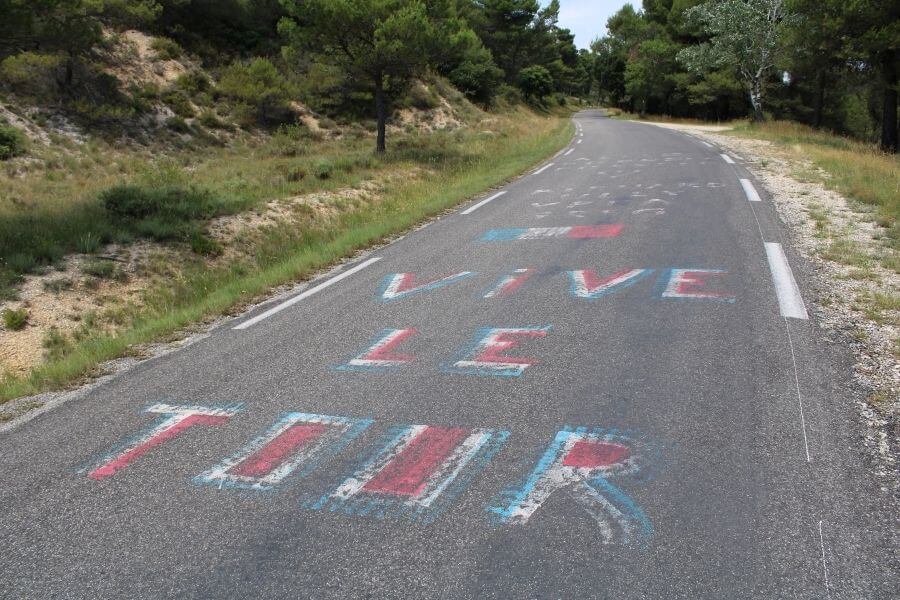
Let's stand at the Paris of 1902, specifically in the Boulevard of Montmartre, in a coffee - restaurant called Zimmer. And imagine a work lunch between boss and employee. One is Henry Desgrange, and directs a newspaper of yellow pages that walks in crisis:
L’Auto - Veló; The other is Géo Lefèvre, the young 23 -year -old journalist who broken
He watched him, the competition newspaper whose green pages are read much more, under the direction of their rival and former teacher: Pierre Giffard.
Young Lefèvre is passionate about bikes, and is there because he has an idea to tell his boss, a kind of magical formula to relaunch sales of
L’Ar that releases between coffee and desserts: organize a race that turns France in six stages that it intends to baptize as the six days of the route.
Desgrange is skeptical: "Are you proposing to go around France?" But after the initial impact he decides to leave doubts, and consults the viability of the occurrence with the newspaper accountant, Víctor Goddet, who captures the first that what seems crazy can be the solution to sell more newspapers.
So Goddet approves Desgrange and, from that day, November 20, 1902, the director puts the task of organizing an unprecedented career. There is, yes, the Paris - Rouen, since 1869; Also La Paris - Roubaix, created in 1896 by the damn Giffard and his
See him. But anything has never been done in stages, with that mileage, with those claims ... Desgrange faces colossal difficulties, mostly logistics and financing, but gets the help of three entrepreneurs angry with the editorial line that Giffard carries in
See him: They are Dion, Clement and Michelin. It will be a battle to death between two media, and only one will survive.
The first edition of the Tour started on July 1, 1903 with 60 cyclists; The bicycles that were wearing more than 20 kilos and a single 54x17 development
One by one, Desgrange is raffling obstacles, until it reaches the last: the low registration of runners. He decides to beat him by cutting down the healthy: the quota of twenty to ten francs down, and triggers the awards to thirty thousand.
Et voila!: On July 1, 1903, the first Tour de France starts with sixty cyclists. From the initial registration, nineteen have backed down, perhaps so that they are not called crazy, because it is what is in the mouth of many people after checking that 2,428 kilometers must be covered in six stages and 19 days of the race, with part of their nights, and that there will only be two rest days.
About two thousand people come to the call of the unusual and see the pioneer squad in the town of Montgeron, about twenty kilometers southeast of Paris, next to the inn of Au Réveil Matin
The alarm. From there they come out cyclists free to carry the bicycle they want, as long as it is moved exclusively by muscle force.
What seems like a cyclopean challenge today is summarized: all bikes pass from the twenty kilos, not counting the tools to be carried, because assistance cars, coaches, mechanics are prohibited ... They also work with a fixed combination between 54x17 plate and pinion; There are no changes, since this invention will not be implemented until 1937. The first efforts of the route will have to travel the 467 kilometers of the first stage to Lyon, with which the story of the Tour de France starts.
How to win the tour: The road to the yellow jersey
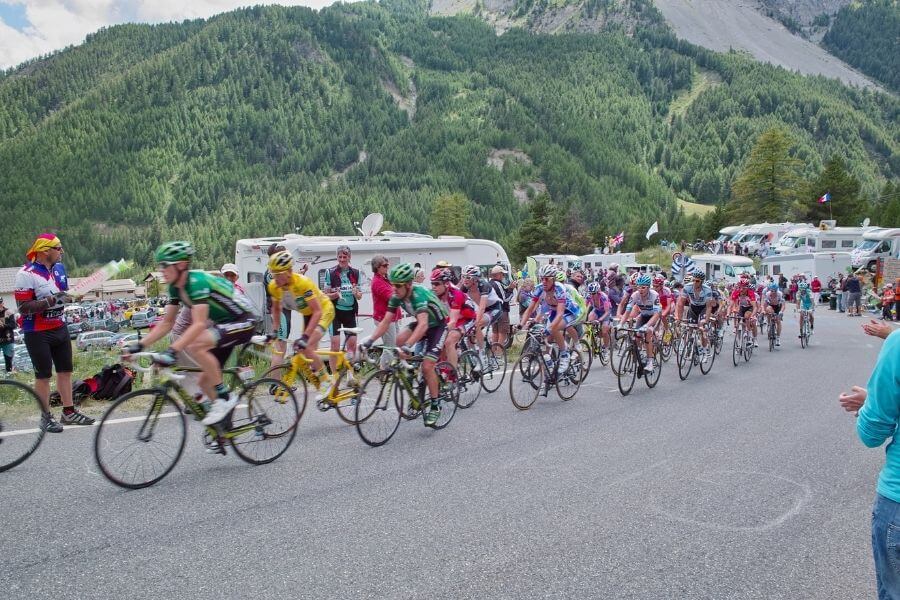
We already know how and why the tour is born, so we see now what to win it. Well simply be the fastest. The first 1903 champion was the French of Italian origin, Maurice Garin, and won because it was the least time invested in the sum of the six stages to Paris: 94 hours, 34 minutes and 14 seconds.
The ideologist of the Tour, Géo Lefèvre, was the one who implemented that general classification model based on accumulating the stages of the stages that are still so valid today, although that first edition had some peculiarities that should be explained, such as that the runners had to set foot to Earth to sign in passing controls, or that abandoning at one stage did not mean goodbye to the race, but the cyclist could play the following, although already out of competition in the general classification.
Maurice Garin covered the six stages of 1903, finding the second classified in almost three hours, his compatriot Lucien Pothier. After them, only other nineteen cyclists managed to finish, the last one almost sixty -five hours. The rest was lost between abandonments and disqualifications for cheating, something that was already a real problem in 1904. In that edition, many cyclists were disqualified by things like using trains, taking advantage of the trail of cars, receiving external aids ... They saved or Maurice Garin, dispossessed winner of the title months later, not even the three of the general. Nor stage winners. All were sanctioned after an exhaustive investigation.
The yellow jersey was introduced in 1919, after World War I; That color was chosen because it was the color of the pages of the newspaper L'Auto
The 1904 scandal changed the system for 1905, when the points classification was adopted to determine the Tour's absolute champion: the first cyclist to cross the finish line received a point, and the others added a point more than the cyclist that crossed The arrival line ahead, plus an additional point for every five minutes between them. The Frenchman Louis Toussellier was the one who totaled the least points and, therefore, the first winner with the new formula, which was in force until the system by accumulation of time was already reimplanted forever from the 1913 tour.
At this point the mythical yellow jerse
L’Auto - Veló. That year, the first to carry it was Eugène Cristophe, from the eleventh stage, of the fifteen scheduled to cover the colossal route of 5,560 kilometers. The French could not keep it to Paris, and was the Belgian Firmin Lambot the first to wore the precious garment as an absolute winner in the Princes Park.
That July 27, 1919 began the legend of the yellow jerse Yes deserving of mention. Let's see which to better understand the race.
Mountain Grand Prize: The Lunar Mail
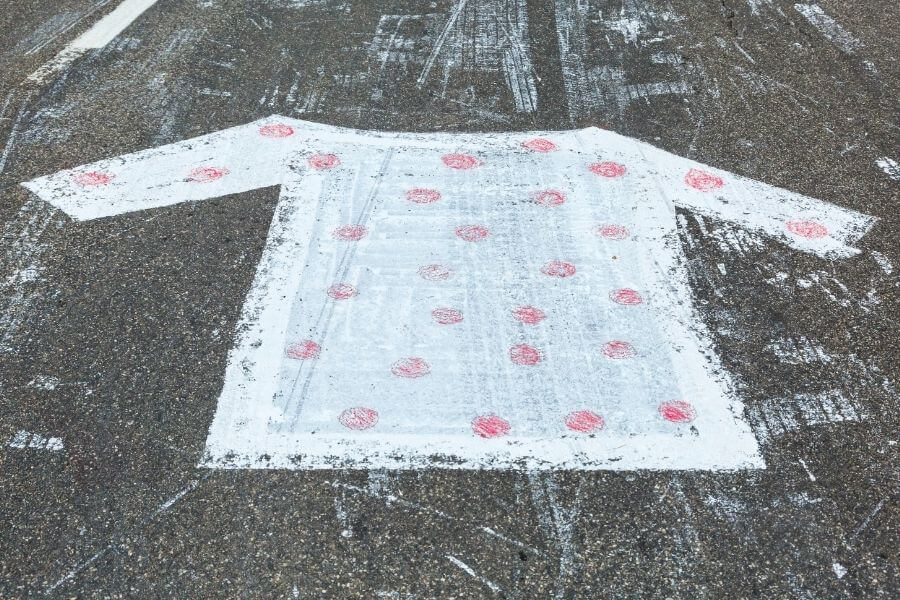
The gradual implementation of the secondary classifications has been opening new possibilities of winning the tour, if not as important as the general classification, with enough weight to meet cyclists with specific qualities, although they are not necessarily the best and most complete .
In this section, the Mountain Prize, an award dating from the 1905 edition, when the Tour faced
His first climb of a certain size in Alsace's ball, in the Vosgos mountain range. Since that year,
L’Auto - Veló He was in charge of choosing the best climber in the race without mediating scores, until Henri Desigrange decided to do so in the 1933 edition, in which Vicente Trueba,
La Pulga de Torrelavega, he was crowned as a mountain king.
The Cantabrian cyclist, who had closed the palmraés that had been solving by designation
L’Ar Winning in 1932, he opened the record by score, but in Paris he did not look at any jersey. Nor did the great Federico Martín Bahamontes, six times better climber on the tour. Because? Because the distinctive garment of the mountain leader did not arrive until 1975, when the Tour de France decided to establish the lunar jersey, or red dots on white background, the colors used by the brand of sponsoring chocolates in its wrappers. The first to wear it on the podium of Paris was the Belgian Lucien Van Impe, another of the greats of the classification of the climbers.
Mountain ports are classified according to various factors, such as altimetry, length, unevenness or location that has in the stage
The Mountain Grand Prix is awarded to the cyclist who adds more points in the peaks of
The Tour ports, and the greater the difficulty of climbing, the greater the loot at the summit. That is why the organization establishes five categories of ports: four of them are numbered, and are the ones that go from the most affordable rise in fourth category to the most difficult, first, through the ports of second and third; The other is the most special and corresponds to the toughest ports, called in France the
Hors Catégorie, or out of category.
Cataloging depends mainly on altimetry, with objective data such as length, unevenness to save or the pending of the climbing; But more subjective aspects also intervene, such as the location of the port, which can see its category increased the more in the end, especially if the stage ends up.
The current relationship of scores according to the categories is as follows: The out of category give points to the first eight runners to crown them, at the rate of 20, 15, 12, 10, 8, 6, 4 and 2 points; The first category reward the first six, with 10, 8, 6, 4, 2 and 1 point; The second reduce the quota to the first four, with 5, 3, 2 and 1 point; Third category give 2 points to the first and 1 to the second; and those of the fourth only give 1 point to the first to crowns. The organization is reserved in each edition of additional incentives, such as folding the top score of the race (Henri Desigrange Award), or in late concrete.
Point classification: the green jersey
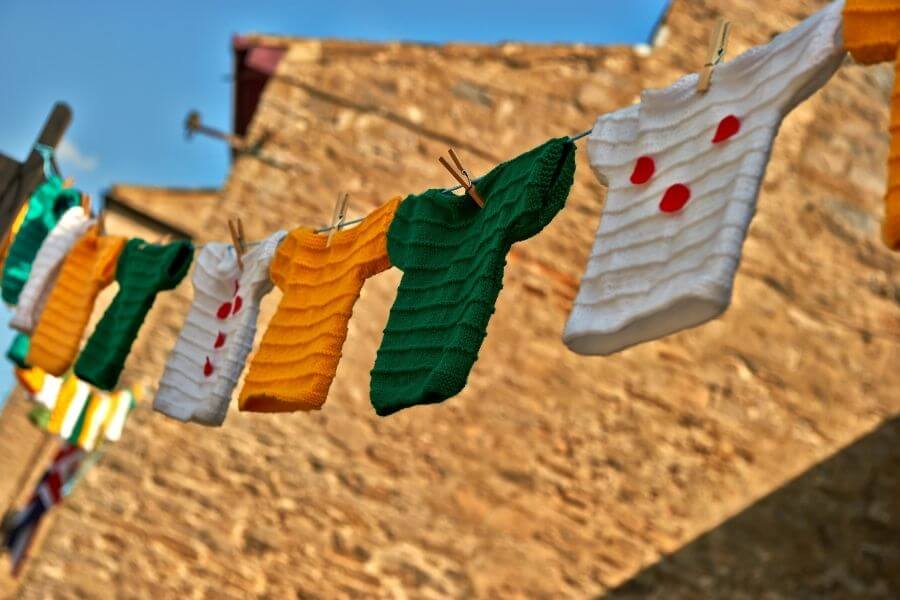
As we have seen when reviewing the history of its beginnings, the Tour de France has already used a point system to determine the winner of the absolute classification from 1905 to 1914. That is why in 1953, when the half century of life of the test was commemorated The organization decided to appeal to that formula to create a new secondary classification that reward the regularity of the runners.
Unlike the Mountain Grand Prix, whose jersey had to wait more than forty years, the classification by points or regularity prize had its distinctive jersey from the beginning. Its characteristic green color was nothing but a wink to another of the sponsoring companies, this time a brand of shortcuts.
The points classification system favors the Esprint specialists, who take their record as they are statistically the ones that earn the most stages in the modern era. It also favors the implanted formula of giving more points in the flat stages than in the high mountain or
counterreloj, in addition to the plus that they can obtain in intermediate corders.
But as in everything, there are exceptions, such as Eddy Merckx: the Belgian champion, five times winner of the general, the green jersey was raised up to three times in Paris, without a doubt thanks to the portentous conditions that led him to win the Friolera thirty -four stages, the tour record.
However, the palm is taken by two sprinches: the Slovak Peter Sagan, leader with seven green jerseys, and the German Erik Zabel, who won six consecutive times from 1996 to 2001.
Classification of the best young man: the white jersey
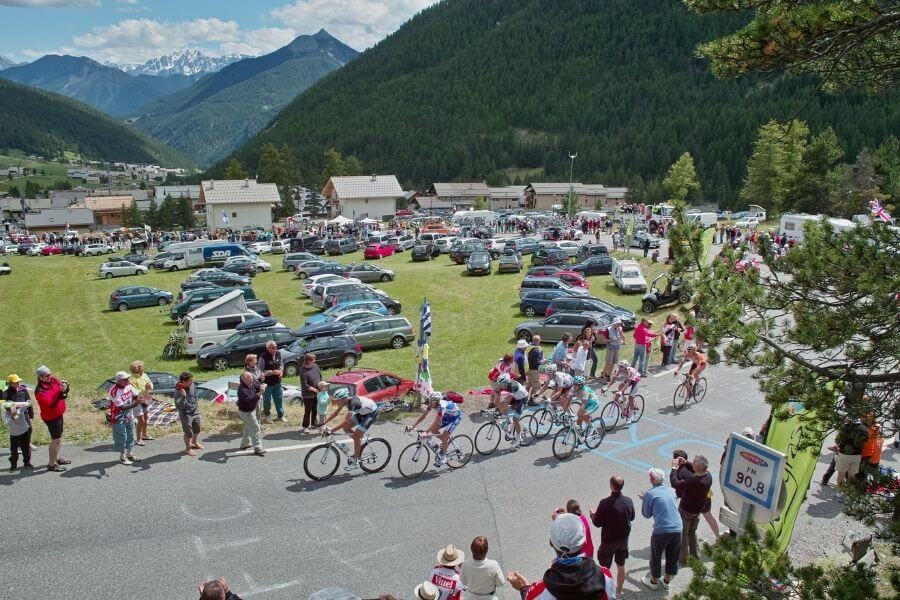
The 1975 edition of the Tour de France premiered two maillots: apart from the mountain lunar jersey, that year the classification of the best young man was created and it was decided to distinguish it with the white jerse which we will talk about later.
The Tour decided to dedicate the new award to those runners under twenty -six during the race and that they have not fulfilled twenty -five prior to January 1 prior to the edition in which they enter into competition.
To determine the best young man, the Tour suppresses the general classification for times to runners over twenty -six years old and is left with those who meet the aforementioned criteria. The established age limit gives a certain margin so that the most early corridors can opt for several victories in the Tour dressed in white. They were the cases of German Jan Ullrich and Luxemburgos Andy Schleck, the two cyclists with the most triumphs - you are each - in the forty -six editions in which this award has been awarded.
Between 1983 and 1986 the white jersey was reserved only to debutant cyclists in the Tour
However, there was not always the opportunity to repeat Victoria, since between 1983 and 1986 the white jersey could only be played by the debutants in the Tour. The Frenchman Laurent Fignon, winner of the yellow jersey and the white jersey in 1983, could not be distinguished the following year as best young despite winning his second consecutive tour one month before he turned 24.
In that 1984 edition, it was the American Greg Lemond who took advantage of the juncture to cool the white jerse And the triumph among young people was at the hands of Colombian Fabio Parra.
The American Andy Hampsten closed in 1986 the small record of the format of the best debutant, and the Tour recovered in 1987 the original criteria to crown the best young man in the race.
Combativity Award
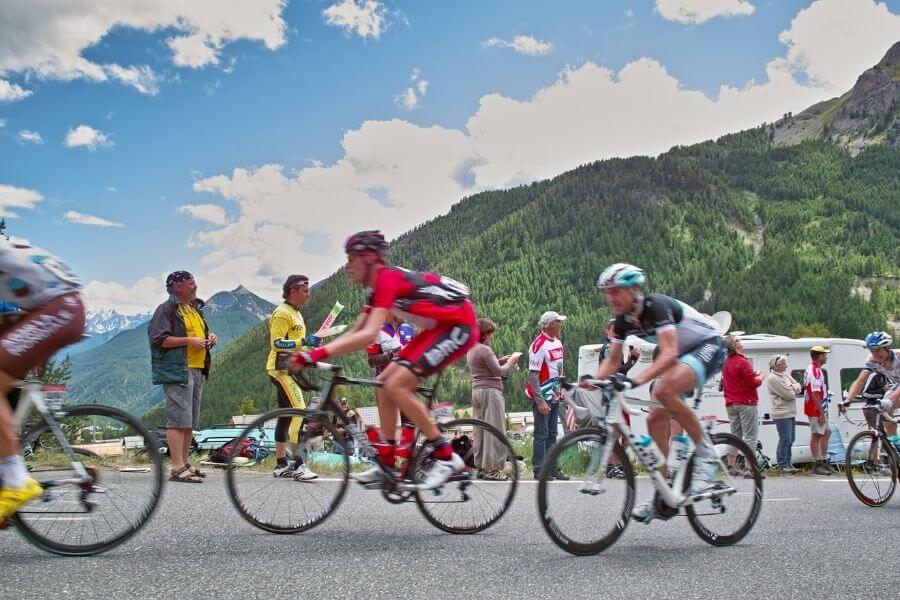
In the stage finals it is also seen to climb to the most combative corridor of the day. It is the only prize that is not subject to classifications and the most subjective, as the winner is chosen by a jury - generally formed by former runners - depending on the battle he has presented during the race.
Not a few times, combativity is a kind of consolation prize for the offensive vocation cyclist that has remained at the gates of glory, after starring in a long getaway, or launching several attacks that contribute to the show, although in the early stages there was A points classification.
The prize was introduced in 1951 to distinguish the most combative of each stage, and was extended in 1956 to be able to award the most combative of the entire race, provided that it would reach the goal of Paris. In this case, there are no jersey to distinguish its winner, but a red background in the dorsal and the honor of getting on the podium in the race final protocols.
The missing combined classification
Presented the four awards in force in the Tour with their respective mailts, it should be remembered that from 1968 to 1989 there was another classification aimed at distinguishing the most complete corridors: the combined.
To elaborate it, the organization added the positions obtained by the cyclists in the general and in the classifications of the mountain and of the regularity, in order to declare winner of the corridor award with less points in the global computation of the three.
The Italian Franco Bitossi inaugurated El Palmarés in 1968, totaling eleven points. Then four victories arrived at Eddy Merckx (1969-1972), without ever climbing the five points! And the Belgian added a fifth victory in 1974. It was the last year before the white distinctive jersey of the combined be used in the classification of the best young man, created the following year.
The prize disappeared from that 1975 edition, and reappeared in 1980 with a jersey as peculiar as remembered, formed by retales with the colors of the other race awards. The Dutch Steven Rooks, the remembered rival of Perico Delgado in his victorious tour of 1988, was the last to win the combined in 1989.
Team classification: number and yellow helmets
[Captation Id = "Attachment_6983" Align = "Alignnone" Width = "744"]
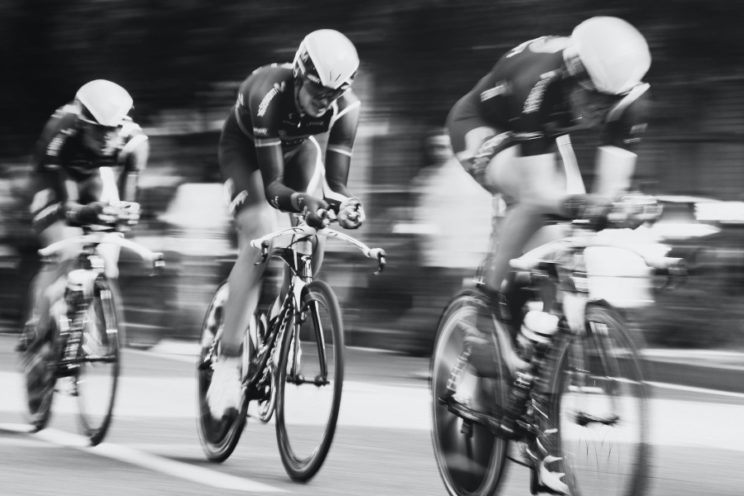
Image: Paolo Candelo / UNSPLASH[/caption]
Henri Desigrange wanted from the first moment that the Tour of France was an individual challenge, the struggle of a man to overcome a tour. That is why he did not admit that the cyclists work as a team, although there were cases of runners who shared the same sponsor.
Finally, the race pattern changed its opinion in 1930, when it admitted the presence of national team Three best of each squad, although throughout the history of the modality, variations were introduced, such as the points classification system implemented in 1961, already under the direction of Jacques Goddet.
The formula barely lasted two years and the system for times returned in 1963, when already
Commercial teams began to replace national teams, something that was final from 1969.
As in the other awards, the team classification also has a distinctive. Between 1952 and 1990 the yellow caps were used among the members of the leading team. With the arrival of the mandatory helmet, the caps disappeared and it was not until 2006 when the organization opted to put a yellow background in the dorsals. That distinction was reinforced from 2012 with yellow helmets.
The seven victories of the Spanish structure of the Movistar, with those obtained under its previous sponsorship of Banesto, and the four of a mythical team like the KAS, stand out in the squads.
How are Tour teams configured: an individual or collective sport?
Reviewed the various awards and ways to win, the doubt of whether cycling is individual or team sport can be assaulted. To find the answer, it is convenient to explain the different roles that each corridor assumes depending on their qualities within a structure, and how is the collective culture of cycling.
Both in the Tour and in many other races, the vast majority of cyclists work in favor of a rows lead Then they will have an impact on the collective, because everything won is usually distributed, including technicians and auxiliary.
That boss surrounds a kind of guard of
CORPS that make up the gregarious -o
Coequipiers, as they say in France-, each with a role to play based on its characteristics. Thus, a qualified gregarious for climbing will be the escort of the head of the ranks in the toughest ports, another that stands out for being a rolling will do so in the flat stages, even in the valleys between ports of the mountain days ...
Or if the leader does not aspire to the general and yes to regularity, those gregarious will be sprinter capable of throwing their boss of ranks in the sprint. Philosophy is rare to see in other sports, and is to push all to a single man to get individual success, so that the reward has an impact on the collective good.
Tactics and strategies to win the Tour de France
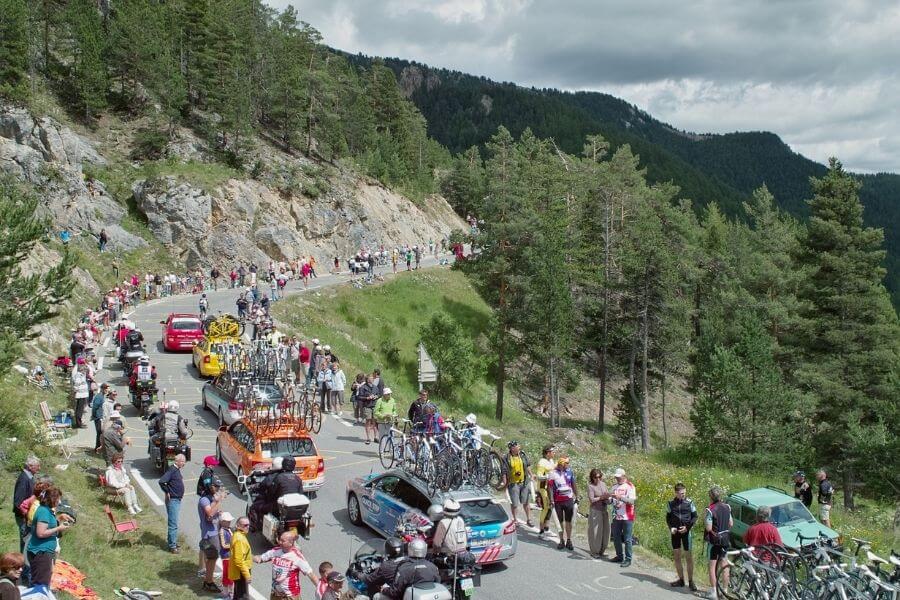
The complexity of a career such as the Tour of France, the diversity of land that offers its route along its current twenty -one days of career, forces to choose very well the strategies to optimize the performance of the runners and obtain the best results.
For example, if a team is led by a climber, the strategy must be conservative in the flat and aggressive stages in the mountain, choosing very marked days to attack. The normal thing is that in that case the head of the ranks has very endowed assistants for the climb, and that each one plays a more or less protagonist role based on their conditions.
Thus, the strongest gregarious after the boss will be the last one to stay by his side to avoid answering the attacks in the first person, or to mark the appropriate pace that allows him to delay or, failing that, aborting the escape of a rival.
The strategies that follow the teams do not have to focus on winning the general classification, as the Tour offers other chances of success
Previously, the team director will have been able to use other less qualified gregarios in his strategy to avoid working the leader at less critical moments of the race, such as neutralizing premature leaks, or taking wind against him against rolling ahead. These gregarios also have tasks such as supplying their leader with water drums, or that of assisting him in case of fault, leaving him if their own bicycle is necessary.
All these tactics and strategies do not necessarily focus on winning the general classification, because as we have seen, the Tour of France offers many other possibilities, beyond a yellow jersey that is only intended for the chosen ones and that, therefore It is not an objective within the reach of all teams.
Strategies can aim to get stage victories, with specialists in escapes or sprinters; o They can aim for secondary classifications such as mountain or regularity, or even team classification, an objective that is not usually a priority, but that the choral fight for the large individual awards often puts shot, adding an additional additional strategic component to get it.
The great champions
The vast history of the Tour de France has given
Great Champions that have registered their name in the most extensive and lustrous record of all the great turns. To the front there are four cyclists who have achieved five absolute wins in Paris: the Belgian Eddy Merckx, the French Bernard Hinault and Jacques Anquetil, and the Spanish Miguel Induráin, the only one to achieve his repopker of yellow maillots consecutively.
After them appears the British Kenyan origin Christopher Froome, the only one with four victories, and runners such as the American Greg Lemond or the Frenchman Louison Bobet, with three.
However, aspects such as fatality,
The epic and legend inherent to the tour Since its creation they have been locking other champions in the collective imaginary, without the need to exhibit such a brilliant history: the Italians Gino Bartali and Fausto Coppi appear with only two victories, but the majority opinion that both would have won much more of Do not mediate World War II.
The Spanish Federico Martín Bahamontes, chosen by the organization as the best climber in history, won only once in Paris, but added two other absolute podiums, was proclaimed six times king of the mountain and starred several unforgettable deeds in the French ports. ..
That santoral of heroes also reserves site to cyclists who never won in Paris but did conquered the heart of the fan, such as the Frenchman Raymond Poulidor, who ended three times in second position and was third on five times, without finding the antidote to attempt against the tyranny exercised by Jacques Anquetil and Eddy Merckx in the sixties and seventies.
The biggest cycling event in the world
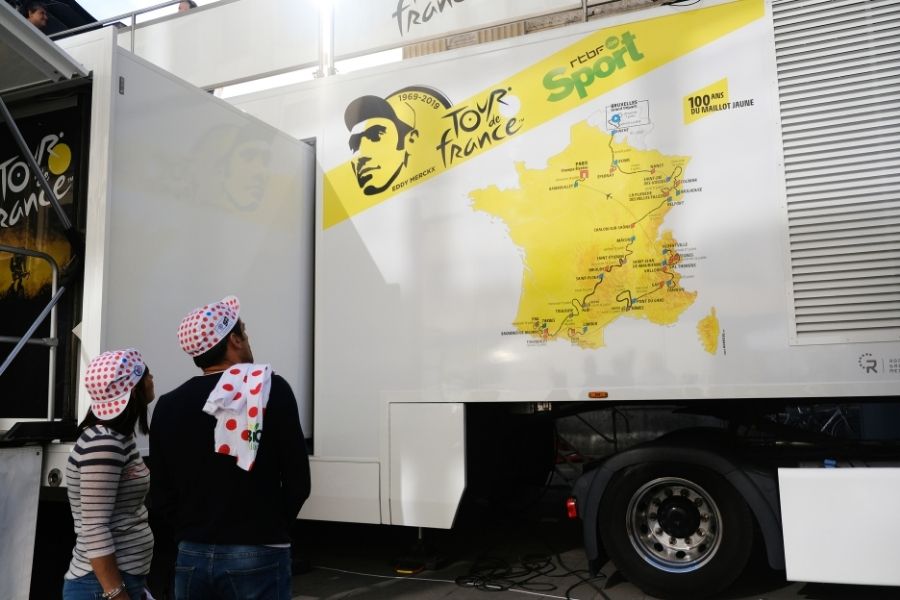
The story, the legends, the great champions and the organizational talent have been some of the ingredients that have led the Tour de France to be the innovative dream of a young 23 -year -old journalist who found echo among his bosses to what he is today: The best stages of the world and one of the greatest sporting events that exist, for many the third, after the World Cup and the Olympic Games.
Only some data are enough: the race is broadcast in 190 countries, through more than one hundred channels that offer a half retransmissions on direct. This television coverage allows to calculate a potential audience of between 3,000 and 3,500 million viewers worldwide, to which we must add what moves in other communication supports, with around two thousand accredited journalists.
To this we must add the Internet, where the Tour website has exceeded 30 million unique visitors and the 110 million pages seen, not counting social networks, where it totalizes 2.2 million followers. All that media popularity becomes more spectacular if possible when it moves to the gutters through which the race passes: French fans take their vacations based on the tour, the race conditions tourism from the areas through which it passes, the images of The race promotes France and the roads are filled with hundreds of thousands of fans, eager to see cyclists, but also to enjoy the commercial caravan that precedes the race, with merchandising, performances and all kinds of gifts ...
C’est le tour, The cycling test that initially saved a newspaper, multiplying its sales by six, and that today is the best race in the world
 Let's stand at the Paris of 1902, specifically in the Boulevard of Montmartre, in a coffee - restaurant called Zimmer. And imagine a work lunch between boss and employee. One is Henry Desgrange, and directs a newspaper of yellow pages that walks in crisis: L’Auto - Veló; The other is Géo Lefèvre, the young 23 -year -old journalist who broken He watched him, the competition newspaper whose green pages are read much more, under the direction of their rival and former teacher: Pierre Giffard.
Young Lefèvre is passionate about bikes, and is there because he has an idea to tell his boss, a kind of magical formula to relaunch sales of L’Ar that releases between coffee and desserts: organize a race that turns France in six stages that it intends to baptize as the six days of the route.
Desgrange is skeptical: "Are you proposing to go around France?" But after the initial impact he decides to leave doubts, and consults the viability of the occurrence with the newspaper accountant, Víctor Goddet, who captures the first that what seems crazy can be the solution to sell more newspapers.
So Goddet approves Desgrange and, from that day, November 20, 1902, the director puts the task of organizing an unprecedented career. There is, yes, the Paris - Rouen, since 1869; Also La Paris - Roubaix, created in 1896 by the damn Giffard and his See him. But anything has never been done in stages, with that mileage, with those claims ... Desgrange faces colossal difficulties, mostly logistics and financing, but gets the help of three entrepreneurs angry with the editorial line that Giffard carries in See him: They are Dion, Clement and Michelin. It will be a battle to death between two media, and only one will survive.
Let's stand at the Paris of 1902, specifically in the Boulevard of Montmartre, in a coffee - restaurant called Zimmer. And imagine a work lunch between boss and employee. One is Henry Desgrange, and directs a newspaper of yellow pages that walks in crisis: L’Auto - Veló; The other is Géo Lefèvre, the young 23 -year -old journalist who broken He watched him, the competition newspaper whose green pages are read much more, under the direction of their rival and former teacher: Pierre Giffard.
Young Lefèvre is passionate about bikes, and is there because he has an idea to tell his boss, a kind of magical formula to relaunch sales of L’Ar that releases between coffee and desserts: organize a race that turns France in six stages that it intends to baptize as the six days of the route.
Desgrange is skeptical: "Are you proposing to go around France?" But after the initial impact he decides to leave doubts, and consults the viability of the occurrence with the newspaper accountant, Víctor Goddet, who captures the first that what seems crazy can be the solution to sell more newspapers.
So Goddet approves Desgrange and, from that day, November 20, 1902, the director puts the task of organizing an unprecedented career. There is, yes, the Paris - Rouen, since 1869; Also La Paris - Roubaix, created in 1896 by the damn Giffard and his See him. But anything has never been done in stages, with that mileage, with those claims ... Desgrange faces colossal difficulties, mostly logistics and financing, but gets the help of three entrepreneurs angry with the editorial line that Giffard carries in See him: They are Dion, Clement and Michelin. It will be a battle to death between two media, and only one will survive.
 We already know how and why the tour is born, so we see now what to win it. Well simply be the fastest. The first 1903 champion was the French of Italian origin, Maurice Garin, and won because it was the least time invested in the sum of the six stages to Paris: 94 hours, 34 minutes and 14 seconds.
The ideologist of the Tour, Géo Lefèvre, was the one who implemented that general classification model based on accumulating the stages of the stages that are still so valid today, although that first edition had some peculiarities that should be explained, such as that the runners had to set foot to Earth to sign in passing controls, or that abandoning at one stage did not mean goodbye to the race, but the cyclist could play the following, although already out of competition in the general classification.
Maurice Garin covered the six stages of 1903, finding the second classified in almost three hours, his compatriot Lucien Pothier. After them, only other nineteen cyclists managed to finish, the last one almost sixty -five hours. The rest was lost between abandonments and disqualifications for cheating, something that was already a real problem in 1904. In that edition, many cyclists were disqualified by things like using trains, taking advantage of the trail of cars, receiving external aids ... They saved or Maurice Garin, dispossessed winner of the title months later, not even the three of the general. Nor stage winners. All were sanctioned after an exhaustive investigation.
We already know how and why the tour is born, so we see now what to win it. Well simply be the fastest. The first 1903 champion was the French of Italian origin, Maurice Garin, and won because it was the least time invested in the sum of the six stages to Paris: 94 hours, 34 minutes and 14 seconds.
The ideologist of the Tour, Géo Lefèvre, was the one who implemented that general classification model based on accumulating the stages of the stages that are still so valid today, although that first edition had some peculiarities that should be explained, such as that the runners had to set foot to Earth to sign in passing controls, or that abandoning at one stage did not mean goodbye to the race, but the cyclist could play the following, although already out of competition in the general classification.
Maurice Garin covered the six stages of 1903, finding the second classified in almost three hours, his compatriot Lucien Pothier. After them, only other nineteen cyclists managed to finish, the last one almost sixty -five hours. The rest was lost between abandonments and disqualifications for cheating, something that was already a real problem in 1904. In that edition, many cyclists were disqualified by things like using trains, taking advantage of the trail of cars, receiving external aids ... They saved or Maurice Garin, dispossessed winner of the title months later, not even the three of the general. Nor stage winners. All were sanctioned after an exhaustive investigation.
 The gradual implementation of the secondary classifications has been opening new possibilities of winning the tour, if not as important as the general classification, with enough weight to meet cyclists with specific qualities, although they are not necessarily the best and most complete .
In this section, the Mountain Prize, an award dating from the 1905 edition, when the Tour faced His first climb of a certain size in Alsace's ball, in the Vosgos mountain range. Since that year, L’Auto - Veló He was in charge of choosing the best climber in the race without mediating scores, until Henri Desigrange decided to do so in the 1933 edition, in which Vicente Trueba, La Pulga de Torrelavega, he was crowned as a mountain king.
The Cantabrian cyclist, who had closed the palmraés that had been solving by designation L’Ar Winning in 1932, he opened the record by score, but in Paris he did not look at any jersey. Nor did the great Federico Martín Bahamontes, six times better climber on the tour. Because? Because the distinctive garment of the mountain leader did not arrive until 1975, when the Tour de France decided to establish the lunar jersey, or red dots on white background, the colors used by the brand of sponsoring chocolates in its wrappers. The first to wear it on the podium of Paris was the Belgian Lucien Van Impe, another of the greats of the classification of the climbers.
The gradual implementation of the secondary classifications has been opening new possibilities of winning the tour, if not as important as the general classification, with enough weight to meet cyclists with specific qualities, although they are not necessarily the best and most complete .
In this section, the Mountain Prize, an award dating from the 1905 edition, when the Tour faced His first climb of a certain size in Alsace's ball, in the Vosgos mountain range. Since that year, L’Auto - Veló He was in charge of choosing the best climber in the race without mediating scores, until Henri Desigrange decided to do so in the 1933 edition, in which Vicente Trueba, La Pulga de Torrelavega, he was crowned as a mountain king.
The Cantabrian cyclist, who had closed the palmraés that had been solving by designation L’Ar Winning in 1932, he opened the record by score, but in Paris he did not look at any jersey. Nor did the great Federico Martín Bahamontes, six times better climber on the tour. Because? Because the distinctive garment of the mountain leader did not arrive until 1975, when the Tour de France decided to establish the lunar jersey, or red dots on white background, the colors used by the brand of sponsoring chocolates in its wrappers. The first to wear it on the podium of Paris was the Belgian Lucien Van Impe, another of the greats of the classification of the climbers.
 As we have seen when reviewing the history of its beginnings, the Tour de France has already used a point system to determine the winner of the absolute classification from 1905 to 1914. That is why in 1953, when the half century of life of the test was commemorated The organization decided to appeal to that formula to create a new secondary classification that reward the regularity of the runners.
Unlike the Mountain Grand Prix, whose jersey had to wait more than forty years, the classification by points or regularity prize had its distinctive jersey from the beginning. Its characteristic green color was nothing but a wink to another of the sponsoring companies, this time a brand of shortcuts.
The points classification system favors the Esprint specialists, who take their record as they are statistically the ones that earn the most stages in the modern era. It also favors the implanted formula of giving more points in the flat stages than in the high mountain or counterreloj, in addition to the plus that they can obtain in intermediate corders.
But as in everything, there are exceptions, such as Eddy Merckx: the Belgian champion, five times winner of the general, the green jersey was raised up to three times in Paris, without a doubt thanks to the portentous conditions that led him to win the Friolera thirty -four stages, the tour record.
However, the palm is taken by two sprinches: the Slovak Peter Sagan, leader with seven green jerseys, and the German Erik Zabel, who won six consecutive times from 1996 to 2001.
As we have seen when reviewing the history of its beginnings, the Tour de France has already used a point system to determine the winner of the absolute classification from 1905 to 1914. That is why in 1953, when the half century of life of the test was commemorated The organization decided to appeal to that formula to create a new secondary classification that reward the regularity of the runners.
Unlike the Mountain Grand Prix, whose jersey had to wait more than forty years, the classification by points or regularity prize had its distinctive jersey from the beginning. Its characteristic green color was nothing but a wink to another of the sponsoring companies, this time a brand of shortcuts.
The points classification system favors the Esprint specialists, who take their record as they are statistically the ones that earn the most stages in the modern era. It also favors the implanted formula of giving more points in the flat stages than in the high mountain or counterreloj, in addition to the plus that they can obtain in intermediate corders.
But as in everything, there are exceptions, such as Eddy Merckx: the Belgian champion, five times winner of the general, the green jersey was raised up to three times in Paris, without a doubt thanks to the portentous conditions that led him to win the Friolera thirty -four stages, the tour record.
However, the palm is taken by two sprinches: the Slovak Peter Sagan, leader with seven green jerseys, and the German Erik Zabel, who won six consecutive times from 1996 to 2001.
 The 1975 edition of the Tour de France premiered two maillots: apart from the mountain lunar jersey, that year the classification of the best young man was created and it was decided to distinguish it with the white jerse which we will talk about later.
The Tour decided to dedicate the new award to those runners under twenty -six during the race and that they have not fulfilled twenty -five prior to January 1 prior to the edition in which they enter into competition.
To determine the best young man, the Tour suppresses the general classification for times to runners over twenty -six years old and is left with those who meet the aforementioned criteria. The established age limit gives a certain margin so that the most early corridors can opt for several victories in the Tour dressed in white. They were the cases of German Jan Ullrich and Luxemburgos Andy Schleck, the two cyclists with the most triumphs - you are each - in the forty -six editions in which this award has been awarded.
The 1975 edition of the Tour de France premiered two maillots: apart from the mountain lunar jersey, that year the classification of the best young man was created and it was decided to distinguish it with the white jerse which we will talk about later.
The Tour decided to dedicate the new award to those runners under twenty -six during the race and that they have not fulfilled twenty -five prior to January 1 prior to the edition in which they enter into competition.
To determine the best young man, the Tour suppresses the general classification for times to runners over twenty -six years old and is left with those who meet the aforementioned criteria. The established age limit gives a certain margin so that the most early corridors can opt for several victories in the Tour dressed in white. They were the cases of German Jan Ullrich and Luxemburgos Andy Schleck, the two cyclists with the most triumphs - you are each - in the forty -six editions in which this award has been awarded.
 In the stage finals it is also seen to climb to the most combative corridor of the day. It is the only prize that is not subject to classifications and the most subjective, as the winner is chosen by a jury - generally formed by former runners - depending on the battle he has presented during the race.
Not a few times, combativity is a kind of consolation prize for the offensive vocation cyclist that has remained at the gates of glory, after starring in a long getaway, or launching several attacks that contribute to the show, although in the early stages there was A points classification.
The prize was introduced in 1951 to distinguish the most combative of each stage, and was extended in 1956 to be able to award the most combative of the entire race, provided that it would reach the goal of Paris. In this case, there are no jersey to distinguish its winner, but a red background in the dorsal and the honor of getting on the podium in the race final protocols.
In the stage finals it is also seen to climb to the most combative corridor of the day. It is the only prize that is not subject to classifications and the most subjective, as the winner is chosen by a jury - generally formed by former runners - depending on the battle he has presented during the race.
Not a few times, combativity is a kind of consolation prize for the offensive vocation cyclist that has remained at the gates of glory, after starring in a long getaway, or launching several attacks that contribute to the show, although in the early stages there was A points classification.
The prize was introduced in 1951 to distinguish the most combative of each stage, and was extended in 1956 to be able to award the most combative of the entire race, provided that it would reach the goal of Paris. In this case, there are no jersey to distinguish its winner, but a red background in the dorsal and the honor of getting on the podium in the race final protocols.
 Image: Paolo Candelo / UNSPLASH[/caption]
Henri Desigrange wanted from the first moment that the Tour of France was an individual challenge, the struggle of a man to overcome a tour. That is why he did not admit that the cyclists work as a team, although there were cases of runners who shared the same sponsor.
Finally, the race pattern changed its opinion in 1930, when it admitted the presence of national team Three best of each squad, although throughout the history of the modality, variations were introduced, such as the points classification system implemented in 1961, already under the direction of Jacques Goddet.
The formula barely lasted two years and the system for times returned in 1963, when already Commercial teams began to replace national teams, something that was final from 1969.
As in the other awards, the team classification also has a distinctive. Between 1952 and 1990 the yellow caps were used among the members of the leading team. With the arrival of the mandatory helmet, the caps disappeared and it was not until 2006 when the organization opted to put a yellow background in the dorsals. That distinction was reinforced from 2012 with yellow helmets.
The seven victories of the Spanish structure of the Movistar, with those obtained under its previous sponsorship of Banesto, and the four of a mythical team like the KAS, stand out in the squads.
Image: Paolo Candelo / UNSPLASH[/caption]
Henri Desigrange wanted from the first moment that the Tour of France was an individual challenge, the struggle of a man to overcome a tour. That is why he did not admit that the cyclists work as a team, although there were cases of runners who shared the same sponsor.
Finally, the race pattern changed its opinion in 1930, when it admitted the presence of national team Three best of each squad, although throughout the history of the modality, variations were introduced, such as the points classification system implemented in 1961, already under the direction of Jacques Goddet.
The formula barely lasted two years and the system for times returned in 1963, when already Commercial teams began to replace national teams, something that was final from 1969.
As in the other awards, the team classification also has a distinctive. Between 1952 and 1990 the yellow caps were used among the members of the leading team. With the arrival of the mandatory helmet, the caps disappeared and it was not until 2006 when the organization opted to put a yellow background in the dorsals. That distinction was reinforced from 2012 with yellow helmets.
The seven victories of the Spanish structure of the Movistar, with those obtained under its previous sponsorship of Banesto, and the four of a mythical team like the KAS, stand out in the squads.
 The complexity of a career such as the Tour of France, the diversity of land that offers its route along its current twenty -one days of career, forces to choose very well the strategies to optimize the performance of the runners and obtain the best results.
For example, if a team is led by a climber, the strategy must be conservative in the flat and aggressive stages in the mountain, choosing very marked days to attack. The normal thing is that in that case the head of the ranks has very endowed assistants for the climb, and that each one plays a more or less protagonist role based on their conditions.
Thus, the strongest gregarious after the boss will be the last one to stay by his side to avoid answering the attacks in the first person, or to mark the appropriate pace that allows him to delay or, failing that, aborting the escape of a rival.
The complexity of a career such as the Tour of France, the diversity of land that offers its route along its current twenty -one days of career, forces to choose very well the strategies to optimize the performance of the runners and obtain the best results.
For example, if a team is led by a climber, the strategy must be conservative in the flat and aggressive stages in the mountain, choosing very marked days to attack. The normal thing is that in that case the head of the ranks has very endowed assistants for the climb, and that each one plays a more or less protagonist role based on their conditions.
Thus, the strongest gregarious after the boss will be the last one to stay by his side to avoid answering the attacks in the first person, or to mark the appropriate pace that allows him to delay or, failing that, aborting the escape of a rival.
 The story, the legends, the great champions and the organizational talent have been some of the ingredients that have led the Tour de France to be the innovative dream of a young 23 -year -old journalist who found echo among his bosses to what he is today: The best stages of the world and one of the greatest sporting events that exist, for many the third, after the World Cup and the Olympic Games.
Only some data are enough: the race is broadcast in 190 countries, through more than one hundred channels that offer a half retransmissions on direct. This television coverage allows to calculate a potential audience of between 3,000 and 3,500 million viewers worldwide, to which we must add what moves in other communication supports, with around two thousand accredited journalists.
To this we must add the Internet, where the Tour website has exceeded 30 million unique visitors and the 110 million pages seen, not counting social networks, where it totalizes 2.2 million followers. All that media popularity becomes more spectacular if possible when it moves to the gutters through which the race passes: French fans take their vacations based on the tour, the race conditions tourism from the areas through which it passes, the images of The race promotes France and the roads are filled with hundreds of thousands of fans, eager to see cyclists, but also to enjoy the commercial caravan that precedes the race, with merchandising, performances and all kinds of gifts ...
C’est le tour, The cycling test that initially saved a newspaper, multiplying its sales by six, and that today is the best race in the world
The story, the legends, the great champions and the organizational talent have been some of the ingredients that have led the Tour de France to be the innovative dream of a young 23 -year -old journalist who found echo among his bosses to what he is today: The best stages of the world and one of the greatest sporting events that exist, for many the third, after the World Cup and the Olympic Games.
Only some data are enough: the race is broadcast in 190 countries, through more than one hundred channels that offer a half retransmissions on direct. This television coverage allows to calculate a potential audience of between 3,000 and 3,500 million viewers worldwide, to which we must add what moves in other communication supports, with around two thousand accredited journalists.
To this we must add the Internet, where the Tour website has exceeded 30 million unique visitors and the 110 million pages seen, not counting social networks, where it totalizes 2.2 million followers. All that media popularity becomes more spectacular if possible when it moves to the gutters through which the race passes: French fans take their vacations based on the tour, the race conditions tourism from the areas through which it passes, the images of The race promotes France and the roads are filled with hundreds of thousands of fans, eager to see cyclists, but also to enjoy the commercial caravan that precedes the race, with merchandising, performances and all kinds of gifts ...
C’est le tour, The cycling test that initially saved a newspaper, multiplying its sales by six, and that today is the best race in the world












